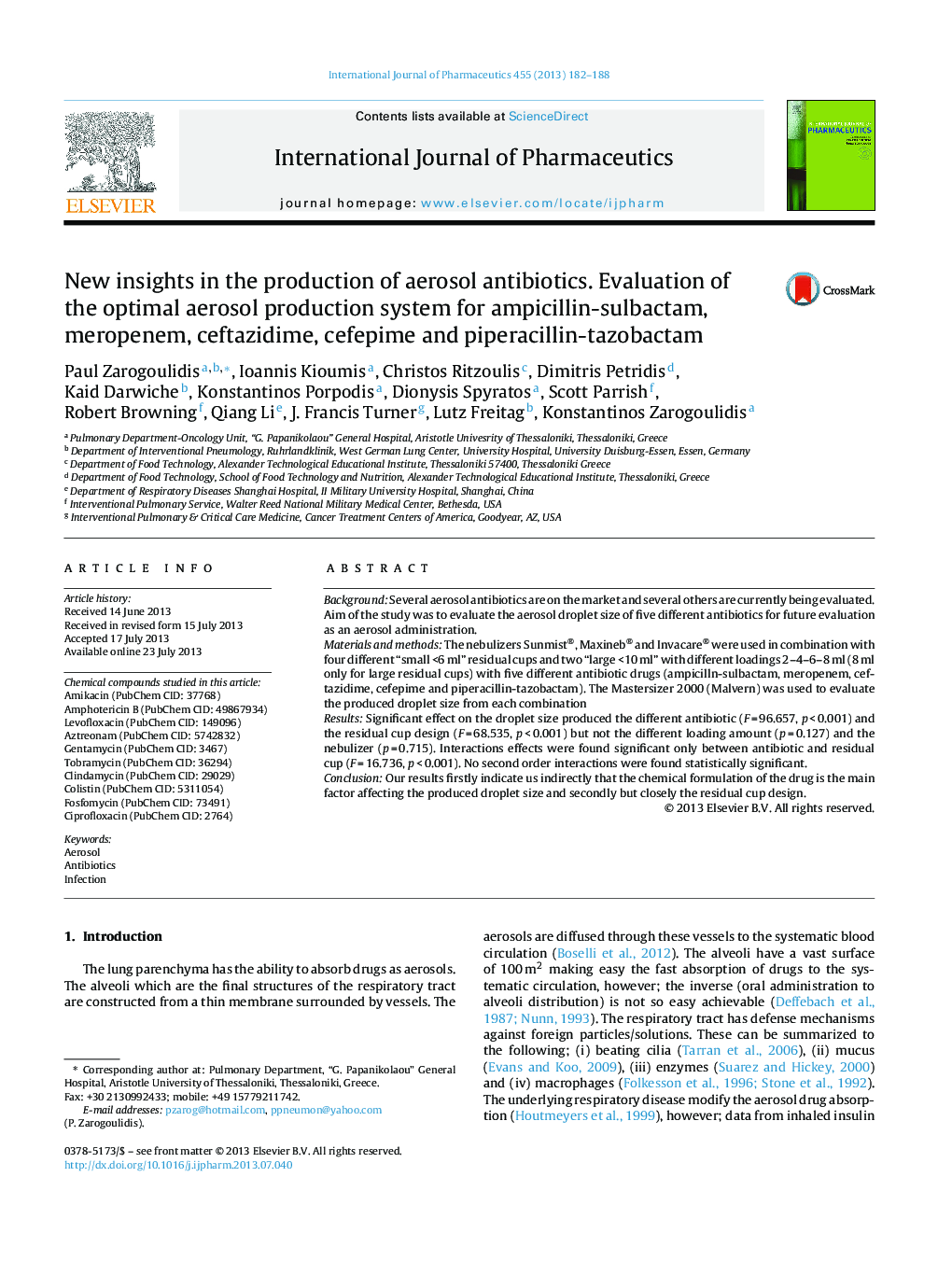| Article ID | Journal | Published Year | Pages | File Type |
|---|---|---|---|---|
| 2502106 | International Journal of Pharmaceutics | 2013 | 7 Pages |
BackgroundSeveral aerosol antibiotics are on the market and several others are currently being evaluated. Aim of the study was to evaluate the aerosol droplet size of five different antibiotics for future evaluation as an aerosol administration.Materials and methodsThe nebulizers Sunmist®, Maxineb® and Invacare® were used in combination with four different “small <6 ml” residual cups and two “large <10 ml” with different loadings 2–4–6–8 ml (8 ml only for large residual cups) with five different antibiotic drugs (ampicilln-sulbactam, meropenem, ceftazidime, cefepime and piperacillin-tazobactam). The Mastersizer 2000 (Malvern) was used to evaluate the produced droplet size from each combinationResultsSignificant effect on the droplet size produced the different antibiotic (F = 96.657, p < 0.001) and the residual cup design (F = 68.535, p < 0.001) but not the different loading amount (p = 0.127) and the nebulizer (p = 0.715). Interactions effects were found significant only between antibiotic and residual cup (F = 16.736, p < 0.001). No second order interactions were found statistically significant.ConclusionOur results firstly indicate us indirectly that the chemical formulation of the drug is the main factor affecting the produced droplet size and secondly but closely the residual cup design.
Graphical abstractFigure optionsDownload full-size imageDownload high-quality image (190 K)Download as PowerPoint slide
